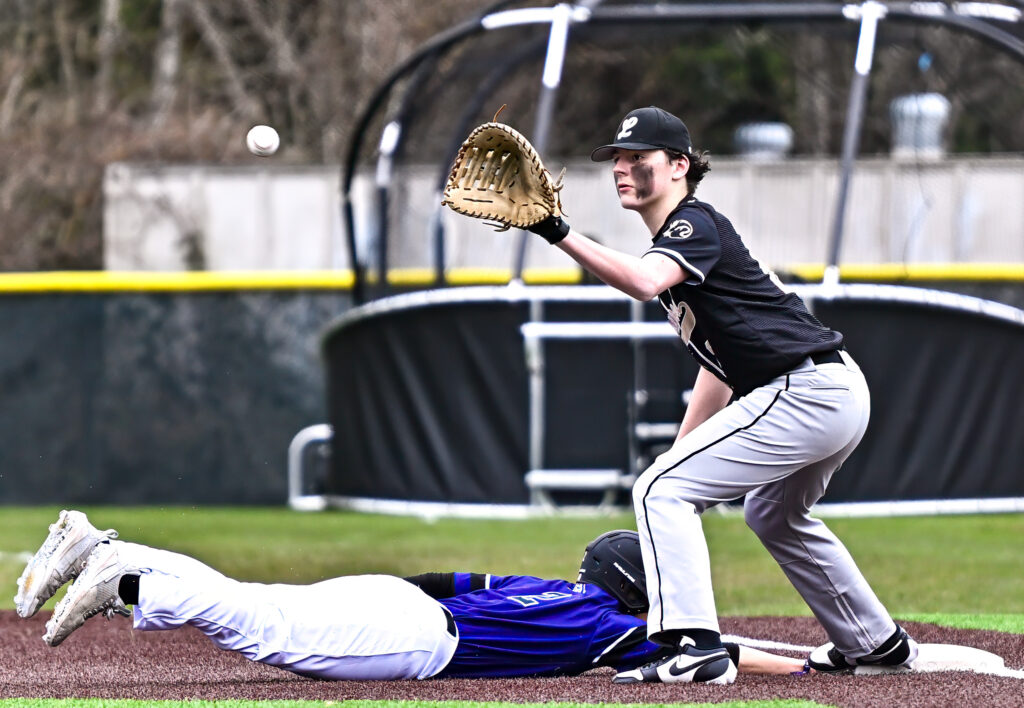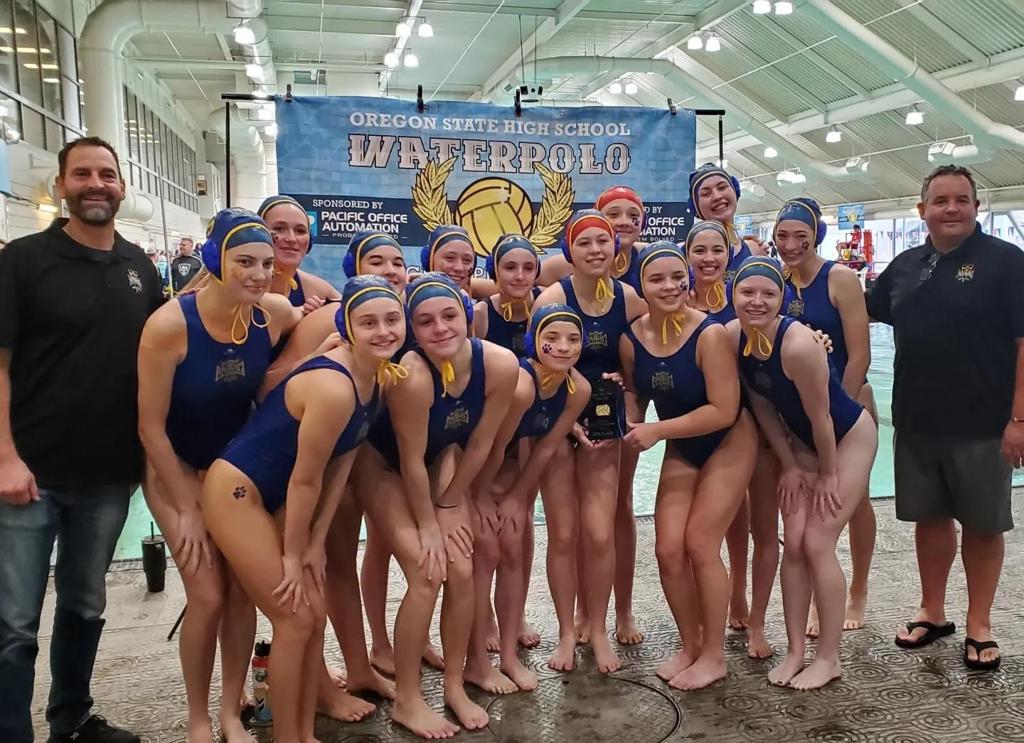Motorsports
NASCAR Talladega full weekend track schedule, TV schedule for Jack Link’s 500, other races
NASCAR returns to Talladega Superspeedway this weekend for the first of two race weekends this year, headlined by the Jack Link’s 500 Cup Series race on April 27. The Cup Series was off last week as the Truck Series and Xfinity Series competed at Rockingham. This week, the Trucks are off while the Cup Series, […]
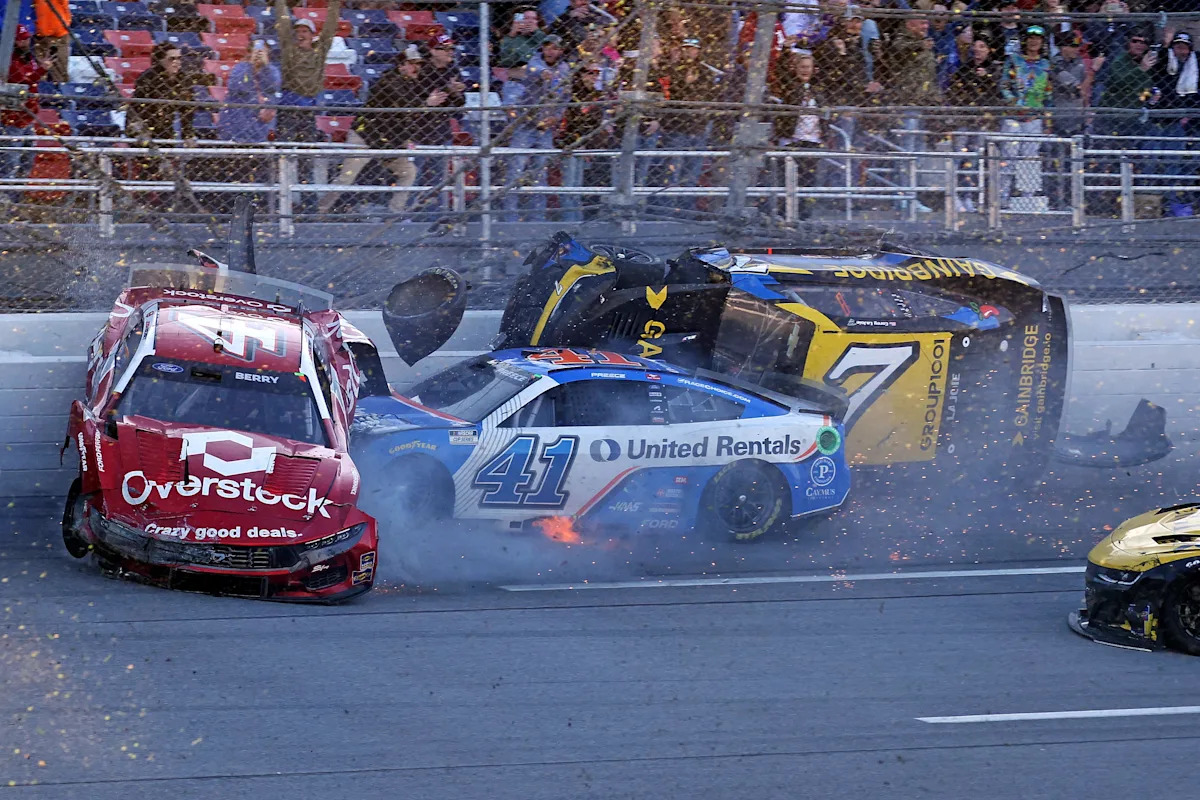
NASCAR returns to Talladega Superspeedway this weekend for the first of two race weekends this year, headlined by the Jack Link’s 500 Cup Series race on April 27.
The Cup Series was off last week as the Truck Series and Xfinity Series competed at Rockingham. This week, the Trucks are off while the Cup Series, Xfinity Series and ARCA Menards Series will race at the largest oval on the schedule.
Advertisement
The Xfinity and ARCA Menards Series will run on April 26, while the Cup Series runs on April 27. Often, the spring Talladega race ends in a fury of wrecked race cars and frayed emotions as drivers push for a win and a playoff spot.
Here is the full on-track schedule in Talladega:
NASCAR Talladega on-track schedule, TV schedule for Jack Link’s 500
All times Central; on-track activity at Talladega Superspeedway.
Friday, April 25
3 p.m. — ARCA Menards Series practice, No TV
4:30 p.m. — NASCAR Xfinity Series qualifying, CW app
Saturday, April 26
9:30 a.m. — NASCAR Cup Series qualifying, Amazon Prime Video
Advertisement
11:30 a.m. — General Tire 200 ARCA Menards Series race (76 laps, 202 miles), FS1 (Watch FREE on Fubo)
3 p.m. — Ag-Pro 300 NASCAR Xfinity Series race (113 laps, 300.58 miles), CW Network (Watch FREE on Fubo)
Sunday, April 27
2 p.m. — Jack Link’s 500 NASCAR Cup Series race (188 laps, 500 miles), FOX (Watch FREE on Fubo) and MAX (in-car cameras)
NASCAR Talladega news, stories
CURRENT POINTS STANDINGS: NASCAR points standings: Cup Series points update after Bristol race
BRISTOL WINNERS AND LOSERS: NASCAR Bristol winners and losers: Kyle Larson dominates short track — again
MORE: Why new Michael Waltrip beer is a salute to Tennessee college
This article originally appeared on Nashville Tennessean: NASCAR Talladega full weekend schedule, TV schedule for Cup Series race
Motorsports
NASCAR and 23XI Racing Square Off in U.S. Court of Appeals
As NASCAR seeks to appeal an injunction awarded to 23XI Racing and Front Row Motorsports by a North Carolina District Court, the appeal proceedings took place on Friday in the U.S. Court of Appeals for the Fourth Circuit in Richmond, VA. The full hearing is available via the United States Court of Appeals YouTube Channel. […]
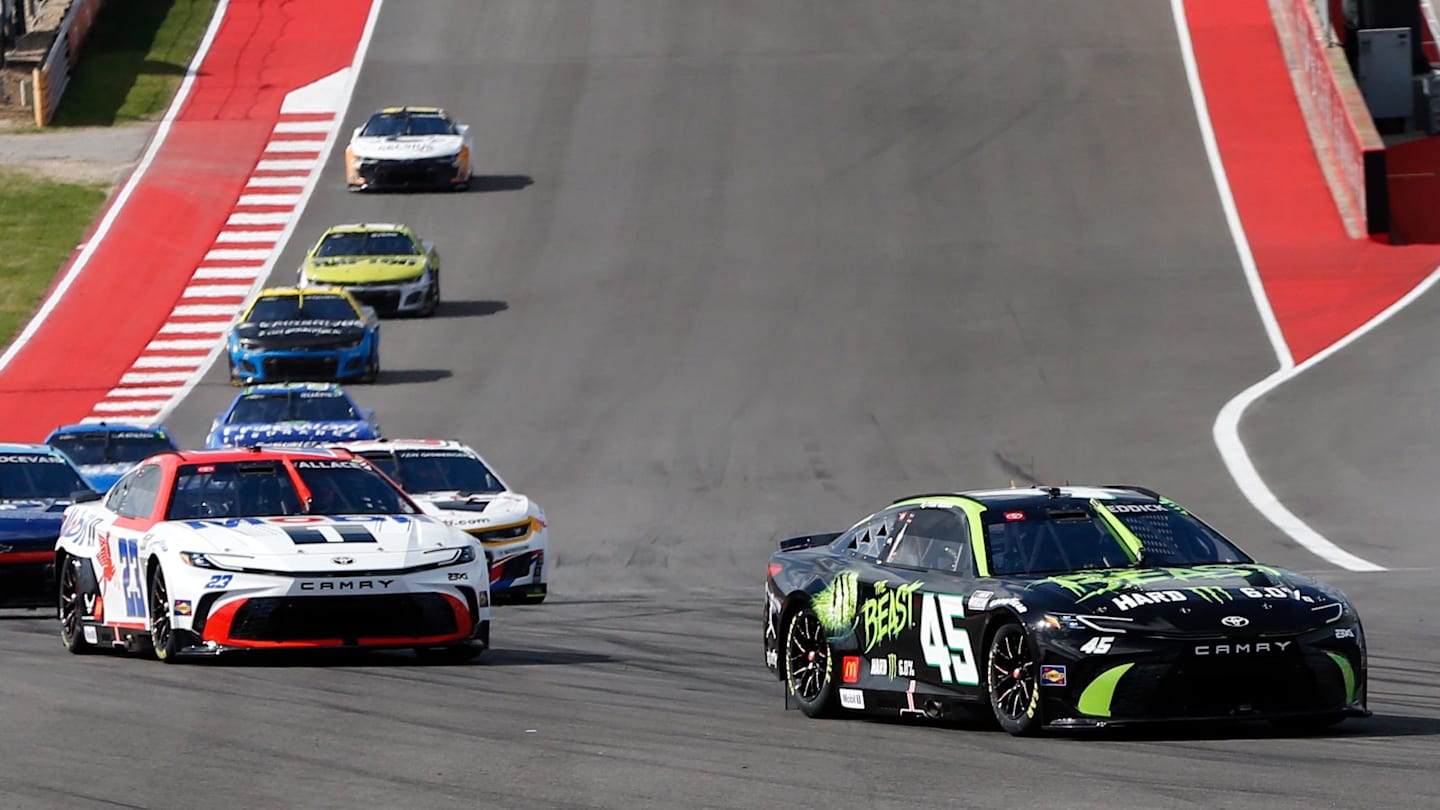
As NASCAR seeks to appeal an injunction awarded to 23XI Racing and Front Row Motorsports by a North Carolina District Court, the appeal proceedings took place on Friday in the U.S. Court of Appeals for the Fourth Circuit in Richmond, VA.
The full hearing is available via the United States Court of Appeals YouTube Channel.
While no ruling is expected on Friday, both NASCAR and 23XI Racing had their chance to have their voice heard in the Lewis F. Powell Jr. U.S. Courthouse in front of Judges Paul Victor Niemeyer, G. Steven Agee, and Stephanie Thacker. NASCAR’s lead attorney, Christopher Yates, had the floor for 15 minutes and was followed by Jeffrey Kessler, the lead attorney for 23XI Racing, who spoke for 20 minutes. Yates then finished the hearing with a five-minute rebuttal.
In his opening 15 minutes on the floor, Yates claimed that the District Court misunderstood the case in awarding the injunction to 23XI Racing and Front Row Motorsports.
Early on, Judge Niemeyer cited precedent from Costco v. Omega in support of Yates’ claim that teams can certainly bring forth antitrust litigation against NASCAR, but that he isn’t sure why they should be allowed to have their cake and eat it too by continuing to compete as Chartered Teams with a modified Charter Agreement while also actively pursuing the litigation.
However, as Yates began to diminish the ruling by the District Court, which awarded the injunction for the teams, the Judge pointed back.
“That’s a little besides the point because the District Court relied exclusively on the release to justify its preliminary injunction, and allowed them to participate in the contract but modified it by saying the release didn’t apply,” Judge Niemeyer said.
The Judge continued, “My point is that what’s before us is an interlocutory appeal on a very narrow issue. A preliminary injunction. And I don’t think we should be deciding what grounds would justify a preliminary injunction. I think we have to take the District Court where it is, and decide whether it was justified.”
During his 20 minutes on the floor, Kessler warned the Appeals Court that reversing the decision on the injunction that has allowed 23XI Racing and Front Row Motorsports to continue to compete as Chartered teams during the 2025 season, despite not being held to the release in the Charter Agreement, which forbids teams from bringing forth antitrust litigation, would invoke havoc within the NASCAR Cup Series garage.
One of the biggest headaches, according to Kessler, would be the restoration of two Charters, which were purchased by 23XI Racing and Front Row Motorsports, back to the now-defunct Stewart-Haas Racing. SHR sold the Charters to 23XI Racing and Front Row Motorsports at the conclusion of the 2024 NASCAR Cup Series season.
“If your honor reverses this, [NASCAR is] going to take the position we should have to unwind these [Charter] purchases, which is also going to be a harm,” Kessler said.
Kessler continued, “That is another example where by overturning this now, in the middle of the season, and the purchases is going to cause all of this undisputable irreparable harm to us, the third parties, Stewart-Haas, who sold to us. Stewart-Haas by the way no longer has any operation to run a team. So, if we gave him the teams back, he has no drivers, he has no pit crew, he has nothing in the middle of the NASCAR season. It will cause havoc to overturn this injunction in the middle of the season. While if it just stays into effect until November, we’re done, and then we have a trial, and we either win or we lose.”
While Kessler argued that changing the status quo would cause irreparable harm for the remainder of the 2025 NASCAR Cup Series season for 23XI Racing and Front Row Motorsports as the teams waited on the trial, which is scheduled for the offseason, Yates argued that each day the injunction remains in place, NASCAR, and the other teams bound to the terms of the 2025 Charter Agreement suffer harm.
NASCAR initially planned on running the 2025 season with just 32 Chartered teams due to 23XI Racing’s, and Front Row Motorsports’ refusal to sign the Charter Agreement, due to this, the other 32 Chartered teams would have made a larger portion of the purse in races during the current season had the injunction not been awarded.
“The reality here is that NASCAR and the other teams are being hurt every day,” Yates said during his final rebuttal. “Every day this injunction stays in place, NASCAR and other teams are being hurt. NASCAR is being hurt because it is forced into a contractual relationship with a counterparty that it doesn’t want to be in a long-term contractual relationship with. Other teams are being hurt because, but for the injunction, other teams would have gotten more money. Other Charter holders would have gotten more money. They would have gotten a bigger part of the pie, the Charter pie.”
Yates continued, “Two-thirds of the season is left, we would urge this Court to act quickly, because NASCAR and other teams are being hurt.”
Near the end of the proceedings, Judge Agee questioned whether the teams and NASCAR have pursued mediation. Following that, Judge Niemeyer indicated that the case between the teams and NASCAR was perfect for mediation.
“Don’t you think this would be a wonderful case for mediation? Both sides have major issues, and if the parties recognize a little bit of give and take, it looks to me like it’s something that could be worked out,” One of the judges explained.
Kessler indicated that he was all for a settlement agreed upon between the sanctioning body and race teams.
“Your Honor, I’m in favor of a settlement. Anytime you can make a settlement for both sides, I’m in favor of it,” Kessler stated.
Yates agreed that mediation will be taken seriously by NASCAR, but that there are some things that are off the table, including rewriting the Charter contract.
“Certainly, but we’re not going to rewrite the Charter contract,” Yates said in response to the question of mediation. “I mean, the Charter contract exists, and that’s what they really want at the end of the day. They don’t like the terms. They call all of the terms, they call them all below competitive. We are not going to rewrite the Charter contract, your Honor, but certainly we’re going to participate in mediation.”
Now we await the decision of the U.S. Court of Appeals on NASCAR’s Appeal of the Injunction awarded to 23XI Racing and Front Row Motorsports from the District Court. This decision is a major one as it could drastically impact what we see on the track on a week-to-week basis in the NASCAR Cup Series.
Recommended Articles
Motorsports
NASCAR’s new championship rotation: Which tracks should be in the mix?
Depending on your perspective, NASCAR crowning its three national series champions at Daytona or Talladega is either a delightfully wild way to decide the title or a completely asinine thought considering the volatility and randomness associated with the style of racing that unfolds on the two drafting tracks. If you fall into the latter camp, […]
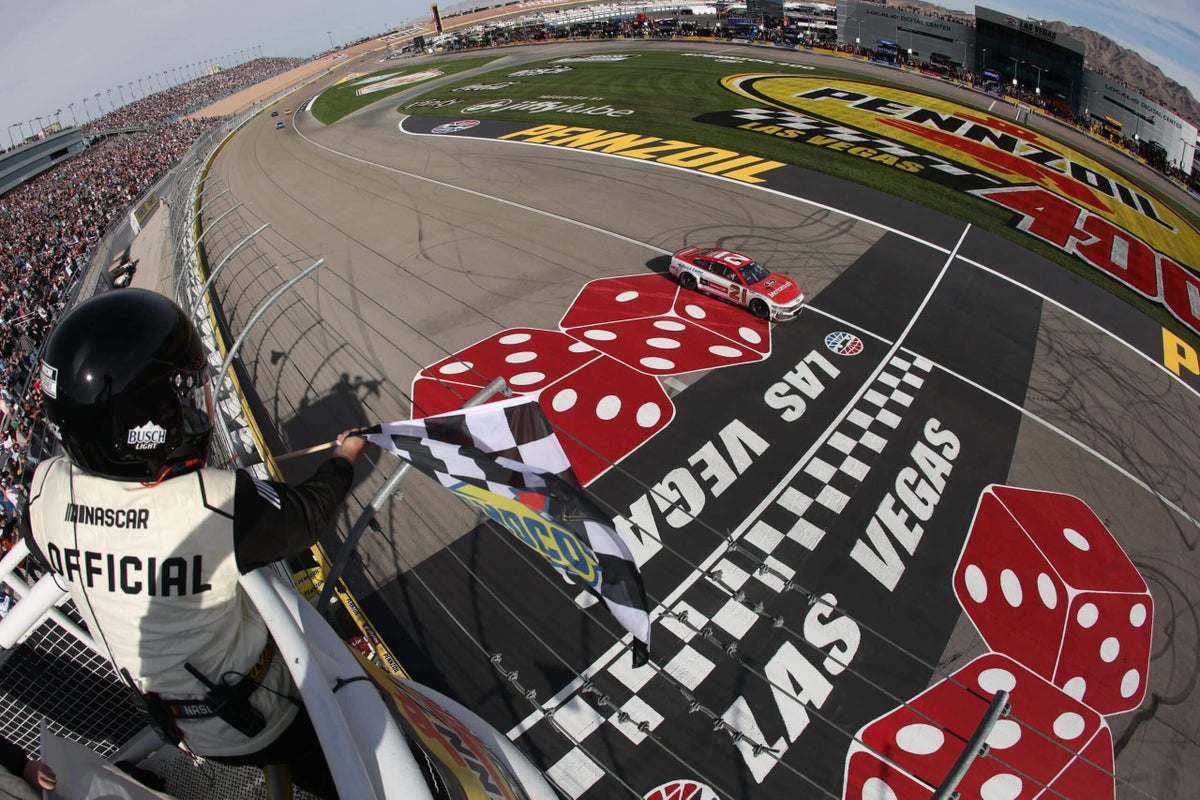
Depending on your perspective, NASCAR crowning its three national series champions at Daytona or Talladega is either a delightfully wild way to decide the title or a completely asinine thought considering the volatility and randomness associated with the style of racing that unfolds on the two drafting tracks.
If you fall into the latter camp, fear not. That thought is universally shared among NASCAR’s decision-makers. Neither Daytona nor Talladega is under consideration for the championship rotation model NASCAR announced Tuesday, where its title finale will shift yearly to a different track. Instead, the preference for now is to rotate the championship weekend among intermediate tracks or short tracks rather than drafting tracks or even road courses.
“Never say never, but I think we’ve unanimously agreed that (championship weekend) needs to look and feel like what we would expect traditional NASCAR racing to look and feel like,” said Ben Kennedy, NASCAR executive vice president, chief venue and racing innovation officer. “Short tracks, intermediate tracks, (one-) mile tracks are all on the board.
“We’ve talked about road courses as well. Again, never say never, but road courses are probably lower on the list as we think about championship venues. So we’re really going to hone in on short tracks and … mile-and-a-halfs for now.”
The exact number of tracks that will eventually make up the rotation is unknown, but NASCAR stated it will certainly include both Homestead and Phoenix.
Homestead hosted the championship from 2002-19 and will do so again in 2026, while Phoenix has served as host since 2020 and will do so again sometime in the future. Both tracks check multiple boxes that NASCAR seeks in a host for its championship weekend, including being a weather-friendly, traditional-style oval near a major market.
So then, what other tracks on the current Cup Series schedule should be considered in the running to host NASCAR’s championship weekend? Based on the criteria above, plus other various factors, go ahead and rule out (in alphabetical order): Atlanta, Circuit of the Americas, Charlotte Roval, Chicago Street Course, Daytona, Dover, Gateway, Indianapolis, Iowa, Mexico City, Michigan, New Hampshire, Pocono, Richmond, Sonoma, Talladega and Watkins Glen.
That leaves eight tracks on the current schedule with a chance, though to varying degrees, of eventually being included in the championship weekend rotation. Let’s examine based on what has been stated publicly and conversations with numerous industry contacts.
Bristol
Case for: Bristol already hosts a popular playoff race that serves as the cutoff for Round 1. It brings the possibility of a dramatic finale featuring a last-lap bump-and-run. It likely would provide an electric atmosphere.
Case against: Many recent races have left a lot to be desired regarding the on-track action. Concerns exist whether the title could end up being a runaway. There’s a likelihood of inclement weather. It’s a small market in an area of the country that is not easily accessible.
Charlotte (oval)
Case for: Charlotte produces consistently great racing. It’s in the heart of NASCAR country, which would allow family, friends and team personnel to pack the house. It’s a good-sized, fan-friendly market. There would be an opportunity to turn the week into a bona fide celebration of the sport that could incorporate events at the NASCAR Hall of Fame and team shops.
Case against: Outside of the weather and lacking the pizazz of Las Vegas or South Florida, there is little reason why Charlotte isn’t deserving of consideration. Still, Charlotte hasn’t received much buzz within the industry as a possible championship host.

Charlotte hosting a finale would give NASCAR a chance to celebrate its history in a strong market at its “home” track. (David Jensen / Getty Images)
Darlington
Case for: There is no more traditional track than NASCAR’s oldest superspeedway. It’s a classic “driver’s track” that fully challenges their skill set and features strong attendance, especially for its fall race, the Southern 500.
Case against: The closest major metropolitan area (Charlotte) is two hours away, and the facility needs upgrades. NASCAR isn’t moving the Southern 500 off Labor Day weekend, which means that in years Darlington would host the finale, it would have two races just 10 weeks apart.
Kansas
Case for: It’s arguably NASCAR’s best track, routinely producing championship-caliber excitement. Across the board, fans, drivers and teams would love this. Kansas City is a passionate sports town.
Case against: If the NFL’s Chiefs have a home game on championship Sunday, NASCAR might struggle to gain attention. While Kansas City isn’t small, it is also only the 33rd-biggest media market in the United States. Unpredictable weather means NASCAR could get lucky with a beautiful day, or it could be cold and uncomfortable.
Las Vegas
Case for: It’s among NASCAR’s most competitive tracks, in a tourist-destination city known for hosting big events. The weather is a non-issue, and it has hosted a popular playoff race since 2018. It checks every box on NASCAR’s list.
Case against: There’s little downside. Sure, the NFL’s Raiders could have a home game that Sunday and Formula One visits later in the month, but neither should be considered an insurmountable hurdle.

The Martinsville playoff race has produced excitement in the past, but the small market and short-track racing concerns make it a championship long shot. (Logan Riely / Getty Images)
Martinsville
Case for: If you thought Martinsville’s semifinal playoff round provided next-level intensity, just imagine the short track deciding the championship. Buckle up. And make sure extra security is on standby.
Case against: Considering how the Next Gen often performs on short tracks, naming Martinsville as host would require a leap of faith by the sanctioning body. Much like Bristol, market size and location are significant hurdles. The facility isn’t the standard expected for a championship venue.
Nashville
Case for: A booming city that knows how to put on big events and would appeal to league partners and team sponsors who’d have no shortage of entertainment options. Although Nashville is not the most competitive among intermediate-sized tracks, it’s still viable. The quality of racing shouldn’t be in question.
Case against: The track is located 30 miles from downtown Nashville, and it would need enhancements. The weather would likely be passable, though not to the level of some other locations on this list. Would fans respond to a championship being here?
Texas
Case for: Once one of NASCAR’s more derided tracks, Texas is making a comeback. Last Sunday’s race had a double-digit increase in attendance and also saw notable gains in other key metrics. The track is one of the most demanding on the schedule (some would say chaotic) and would add a layer of intrigue due to its unpredictability. It’s the fourth-largest media market in the U.S.
Case against: The facilities could use some TLC. Football, football, football: Any championship weekend would be competing against major college programs on Saturday and the NFL’s Dallas Cowboys on Sunday. Texas previously hosted a playoff race for several years that often struggled to capture fan interest.
(Top photo of Las Vegas Motor Speedway: Chris Graythen / Getty Images)
Motorsports
IU Health motorsports fellowship trains doctors for racing injuries – Indianapolis News | Indiana Weather | Indiana Traffic
IU Health motorsports fellowship trains doctors for racing injuries May 09, 2025 The IU Motorsports Medicine Fellowship gives trainees a chance to specialize in everything a doctor might see while working with a motorsports team. The program teaches the fellow about high velocity crash injuries, but they also manage primary care and injury prevention for […]
IU Health motorsports fellowship trains doctors for racing injuries
May 09, 2025
The IU Motorsports Medicine Fellowship gives trainees a chance to specialize in everything a doctor might see while working with a motorsports team.
The program teaches the fellow about high velocity crash injuries, but they also manage primary care and injury prevention for these teams.
A fellow is a fully qualified doctor that has completed their required residency training. Working as a fellow is extra subspecialized training that allows better opportunities for a doctor in the future.
The team of doctors tackle the obvious, high velocity, and ultra high velocity crash injuries, but they also handle injury prevention and sit on safety panels to reduce serious injuries.
IU is increasing the amount of highly specialized motorsports doctors with this program.
These doctors work a lot with IndyCar, but get a chance to learn about other motorsports disciplines.
The program coordinates with multiple motorsports series, which gives the fellow a chance to travel with the teams and get as much real-world experience as possible.
The one-year program starts at the beginning of August, which means it wraps up with the greatest spectacle in racing as one of the final learning opportunities for the fellow.
Motorsports
Chris Buescher is back at Kansas Speedway, reliving the closest Cup Series finish in NASCAR history
KANSAS CITY, Kan. – One year ago, Chris Buescher was beaten by Kyle Larson at Kansas Speedway by the blink of the eye. Less than a blink of an eye. The official margin of victory for the spring race at the track was 0.001 seconds, the closest in NASCAR Cup Series history, and nobody has […]
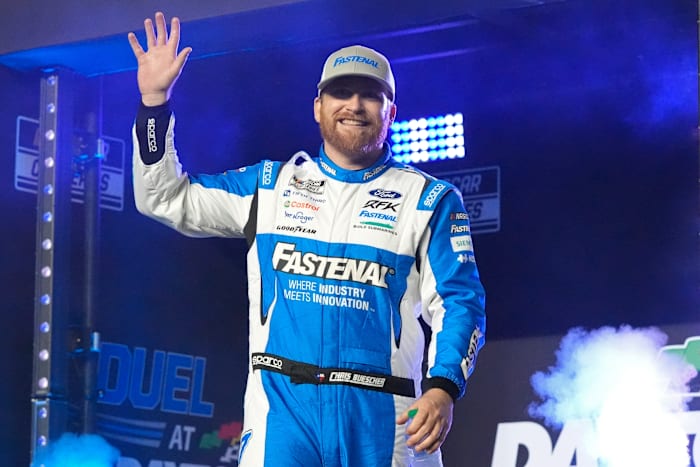
KANSAS CITY, Kan. – One year ago, Chris Buescher was beaten by Kyle Larson at Kansas Speedway by the blink of the eye.
Less than a blink of an eye.
The official margin of victory for the spring race at the track was 0.001 seconds, the closest in NASCAR Cup Series history, and nobody has forgotten it. Not the way that Larson came slinging around the outside of Turns 3 and 4, nor how they were nose-to-nose at the wire, nor how broadcasters thought that Buescher had held him off for the win.
“Certainly at that moment, thought we got it just by my eye,” Buescher recalled this week. “I was probably a little biased.”
It wasn’t until they had nearly finished their cool-down lap that Larson learned he had won.
And that Buescher learned he had not.
“At the end of the day, it was, you know — it was ‘that’ close, right?” Buescher said. “Like I said, played a lot of things in our head that week on what we would have done different, and maybe it would have ended in a different result. But ultimately, it doesn’t matter until we have a chance to replay it.”
They get that chance on Sunday when the Cup Series returns to Kansas Speedway.
Larson is off to another sensational start to the season, with wins at Homestead and Bristol, and three consecutive top-5 runs after his fourth-place finish last week at Texas. He’s the betting favorite to repeat at Kansas and start a busy three-week stretch that includes another shot at the “the Double” — the Indy 500 and Coca-Cola 600 on the same day later this month.
Buescher hasn’t had nearly the same success. His best finish has been a fifth at Phoenix, and in the last three races, he has not finished better than 18th, which is where he put his Ford for RFK Racing last week at Texas.
But perhaps a return to the Heartland will turn around some fortunes. Forget for a moment that he was oh-so-close to winning at Kansas last year, and remember that he not only finished second in the spring but ran a strong 11th in the fall race.
He also had a strong run at Kansas in 2015, when he won the Xfinity Series championship.
Buescher recalled that season this week when he was thinking back to last year’s run at Kansas. Sure, his crew may have been celebrating in his pit stall, thinking he had beaten Larson to the line. But the fella behind the wheel refused to begin celebrating until everything became official — which, of course, turned out to be a good idea.
“I’m not one to celebrate too early, because I just have bad feelings all the time,” Buescher said. “I go back to our championship in Xfinity in 2015. We went into the race, we had to finish 13th, I believe was the number, no matter what (Chase) Elliott did, and we finish that race — no matter what, it was a lock. And I was being yelled at for racing, you know? For trying to pass for sixth or seventh. I was being yelled at by everybody.
“Anyway, we come across the line and we finished the top 10, I think. And you know, it was better than 13th, I know that. And I knew it at the time. So I knew we were done. And I still couldn’t bring myself to celebrate until somebody said something.”
Buescher knows he will always be part of Cup Series history after that photo-finish a year ago. It edged the 2003 spring race at Darlington, where Ricky Craven and Kurt Busch banged doors for the lead, as the closest in Cup Series history. The margin in that case was 0.002 seconds, or double the time between Larson and Buescher at Kansas.
The spring race at Talladega in 2011 also had a 0.002-second margin when Jimmie Johnson beat Clint Bowyer to the finish line.
“We’re chasing a thousandth of a second every week. … You’re chasing fractions all the time. Ultimately, it’s what we signed up to do,” Buescher said. “If it was 1,000th of a second for fifth and sixth, it wouldn’t have stung. But you know, for a win, it makes you relive it for a little bit. But again, it’s just, it’s our world, right? We are always chasing these minute details.”
___
AP auto racing: https://apnews.com/hub/auto-racing
Copyright 2025 The Associated Press. All rights reserved. This material may not be published, broadcast, rewritten or redistributed without permission.
Motorsports
Ice Racing Is on Thin Ice… Literally
For many people, thoughts of amateur motorsport conjure images of sweltering days standing in dusty pits, sweating in Nomex suits during heats, and then slathering on extra layers of sunscreen and sucking on sports drinks between them. But for another group of racers, the fun doesn’t get started until the temperatures are well below zero, […]
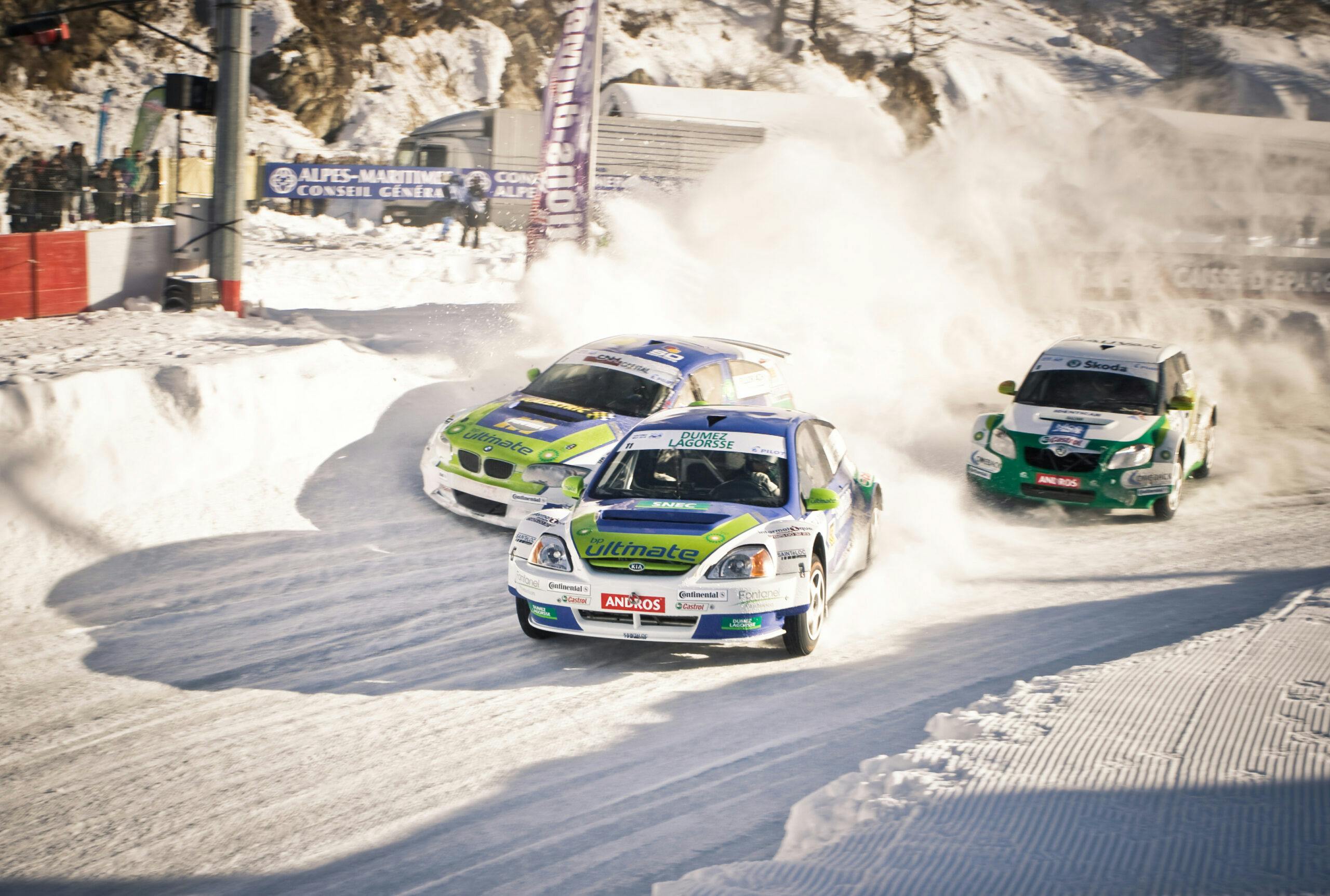
For many people, thoughts of amateur motorsport conjure images of sweltering days standing in dusty pits, sweating in Nomex suits during heats, and then slathering on extra layers of sunscreen and sucking on sports drinks between them. But for another group of racers, the fun doesn’t get started until the temperatures are well below zero, where a successful day not only requires returning home with undamaged fenders but with frostbite-free fingers and toes, too.
That pursuit is, of course, ice racing, an endeavor people have been perfecting for more than 100 years now. Thanks to its very specific environmental requirements, it has always remained something of a regional pursuit. These days, unfortunately, the locales suitable for hosting are getting smaller and the seasons shorter.
Ice racing is about the most fun you can have on two or four wheels, and, if you do it right, it’s among the most accessible forms of motorsport out there. That accessibility has taken a hit in recent times, because ice racing quite naturally requires good ice, and the milder weather over the last several winters has meant that’s increasingly hard to find. As a result, ice racing clubs are failing, series are shuttering, and the future of this low-temp grassroots motorsport is, well, on thin ice. Here’s a look back at what has made ice racing so great, and why its impending death is such a shame.
Variety

The only consistency you have in ice racing as you move from one region to the next is the surface upon which the racing takes place. While the American Motorcycle Association has standardized regulations for motorcycles and ATVs, everything else tends to be small-scale and region-specific.
The lone exception might be France’s professional Trophée Andros series, which got its start in 1990 and featured many well-known drivers, including Alain Prost. Sadly, that series came to an end in 2024, for reasons we’ll explore in just a moment.
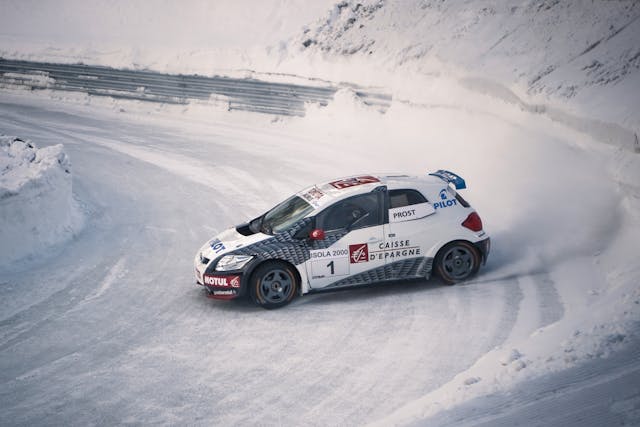

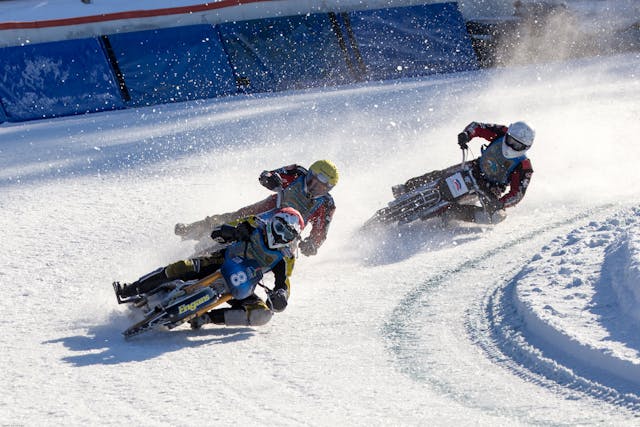

Locally, you’ll find clubs catering to everything from 50cc karts to high-horsepower monsters. Some clubs exclusively do time trials, and some do wheel-to-wheel racing. Some clubs race on ovals, some plow out complex circuits, and some only do straight drag races.
My experience over 20-ish years of ice racing has exclusively been done in cars with fenders, racing wheel-to-wheel on circuits that turn both left and right. I’ve spent all of that time racing with the Adirondack Motor Enthusiast Club (AMEC), which since 1954 has earned the respect of many communities in and around New York’s Adirondack Park. It’s thanks to that respect that the club has also earned the permission to race on some of the pristine lakes dotted throughout that stunning landscape, often carving out courses that ignore the best and thickest ice to make room for the communities of ice fishing shanties that pop up in winter. For most of its 70-plus years, AMEC has been racing with remarkable consistency, though recent changes have affected the group.
Finding Ice
In most forms of motorsport, the biggest barriers to entry are getting a car and getting it to the racing venue. Ice racing, though, presents its own set of challenges.
You still need a vehicle, sure, and you still need to get it to the water. But the biggest challenge these days is finding usable ice. The people I’ve raced with all these years differ widely in terms of their economic, societal, and political backgrounds, but there’s one thing they all seem to agree on: Climate change is making it harder to enjoy their sport.

Throughout its history, AMEC has had a near-perfect record of running, with seasons typically starting in early January and going well into March. Over the years, however, the seasons have started later and ended earlier—until 2023, when the racing just didn’t happen at all. There simply wasn’t enough ice to be found, and there hasn’t been any since.
And how much ice is enough? Twelve solid inches of ice throughout the course and pit area is the bare minimum, and while we’ve often had that volume in the past few years, the quality of the ice—which is just as important as the depth—has lacked. A mid-January thaw, ill-timed rainstorm, or even a big blizzard can create pockets or layers of bad ice that just won’t do for cars sliding sideways at over 100 mph.

Consistently inconsistent weather has meant fewer races on smaller tracks than the club has been known for, but it’s a club that is blessed with dedicated volunteers who have decades of ice-checking know-how. They’re absolute gurus at what they do, and we racers have literally trusted them with our lives every time we go out there.
Those gurus are now often saying that the ice isn’t safe.
Death of a Pastime
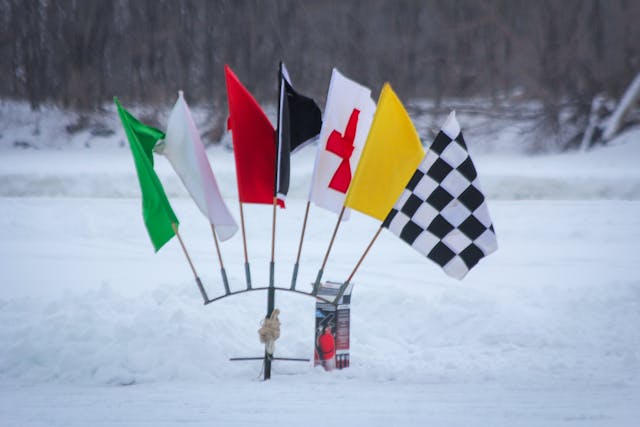
Dave Burnham is one of those guys checking the ice, probing for depth, and, when things look a little uncertain, taking core samples to look for soft sections lurking below the surface. Lately, bad ice is about all he’s been finding.
It’s a dangerous job, too. In 2022, John Cook, who had been a member of the Lakes Region Ice Racing Club in central New Hampshire for more than 40 years, died while checking the ice conditions ahead of an event.
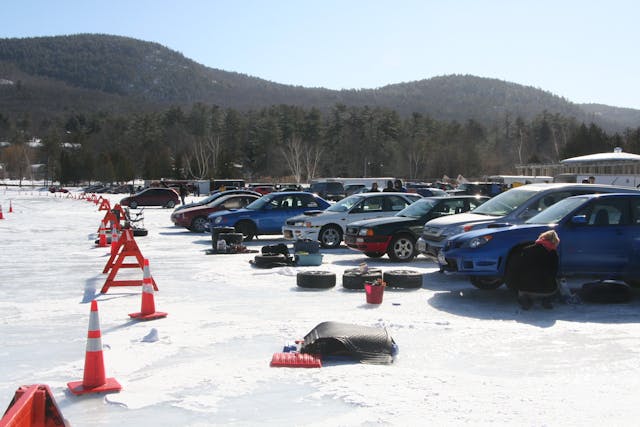
Burnham, who’s been ice racing since 1982 and served as president of AMEC for many years, told me the ice is getting harder to read. “These wild temperature changes are not good for the ice. It can fracture or make it brittle and then soft,” he said. He places the blame squarely on climate change.
As do many other members I spoke with. Caleb Pocok is the current vice president of AMEC and has been an avid racer since 2013. “I can’t see how it can be anything other than climate change when you have club members for 50-plus years telling you the differences in winters and ice over the years,” he said.
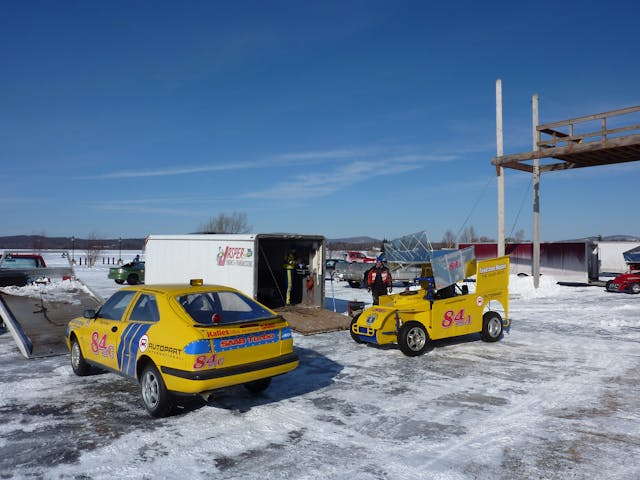
Pocock called the sport the “best bang for your buck racing you’ll find anywhere as far as seat time, cost, and fun factors go.” It’s a sentiment echoed by Paul Dudley, owner/instructor at Dudley’s Driving Academy in Vermont. Dudley has been doing ice racing and on-ice time trials for 21 years now, including organizing time trials and gymkhana events with the Sports Car Club of Vermont (SCCV).
“It’s a pretty depressing topic,” he said. “It’s the most incredible, challenging, dynamic, and unique motorsport I have ever seen.” He also fears that its days are numbered. “I would not be surprised if 10 years from now, ice racing is just something we tell our kids we used to do.”
But it isn’t just bad ice that’s killing the sport. As with other forms of motorsport, rising insurance costs don’t help, and neither do societal shifts. A major factor is finding volunteers, with too few younger members stepping up to help out. “Ice racing is not easy now, between the things we have to do to keep the town happy, lake associations happy, insurance, volunteers, etc.,” Burnham wrote in a letter to a local motorsports magazine. “It’s just not easy anymore.”

Dudley was able to find enough ice on Lake Elmore in northern Vermont to run a few time trial events this past season with SCCV, but those increasing challenges have killed other clubs in and around New England, including the Central New York Ice Racing Association and Maine’s New Meadows Ice Racing Association.
And there is, of course, the aforementioned Trophée Andros series, which ran its last race in January 2024. “The more it goes, the more we are forced to find races in France at an altitude of 1500 meters (5000 feet) to be sure to have ice,” Max Mamers, co-founder of the series, said when announcing its termination. “This climate story is a recurring theme, and it’s global, it’s not just France.”

But there are still clubs out there that are making it work for cars, like Our Gang Ice Racing in Colorado and, indeed, the Lakes Region Ice Racing Club in New Hampshire. Or, if you’re more into quads or bikes, those lighter vehicles and smaller courses mean lower demands for ice, making it easier for groups like the Upper Michigan Ice Racing Association or the Central Wisconsin Ice Racing Association to keep their members busy.
If you’re lucky to live near one of the clubs that is still racing, go sign up, become a member, and ask how you can help. The future of this sport is not guaranteed. A little extra help might just keep your local club running for a few more years—and keep you out there smiling through chattering teeth in the pit lane.
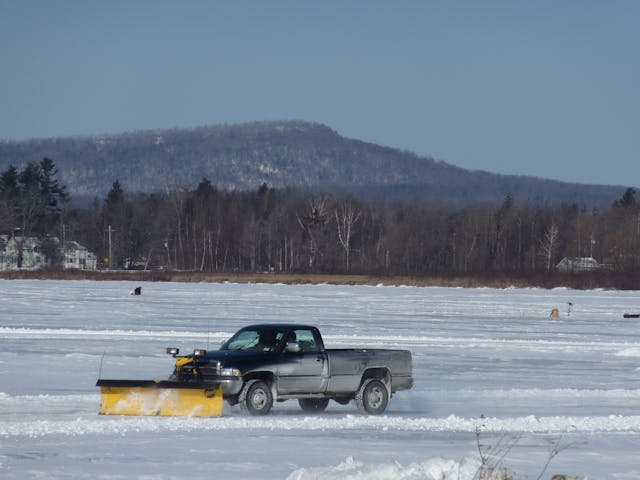
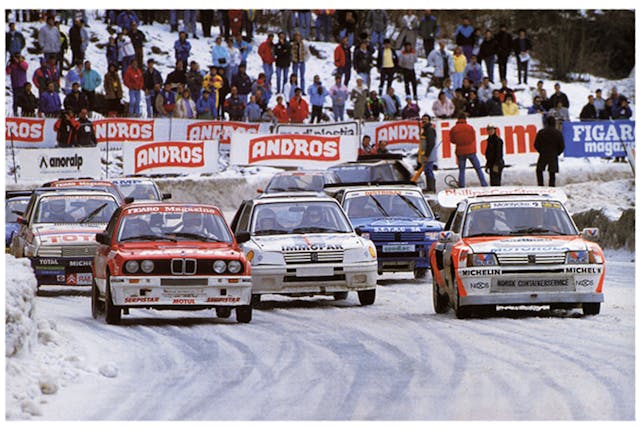

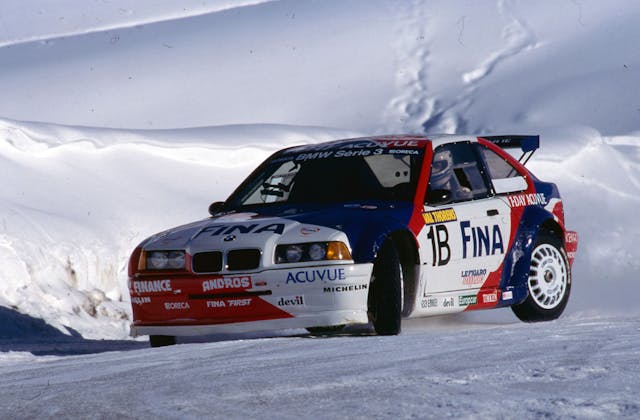
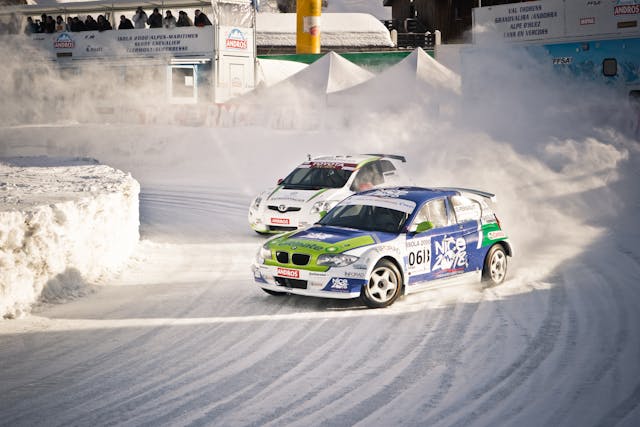
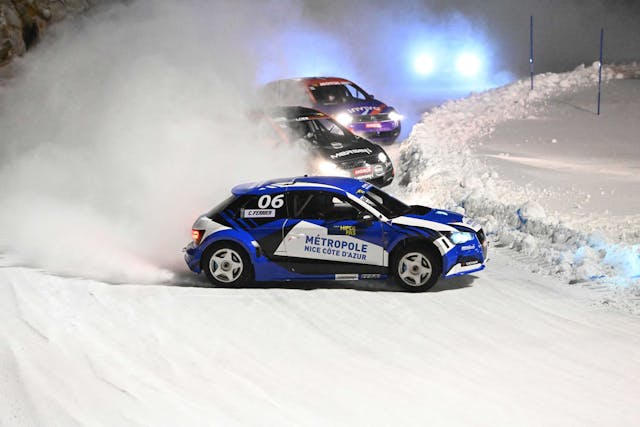
Motorsports
Michael Jordan‘s NASCAR Lawsuit May Hit the Skids After Latest Hearing
Michael Jordan’s win streak in the NASCAR antitrust litigation could be coming to an end. On Friday, a three-judge panel on the U.S. Court of Appeals for the Fourth Circuit held an oral argument in the Lewis F. Powell, Jr. U.S. Courthouse in Richmond, Va., on whether a trial judge correctly granted preliminary injunctions for […]
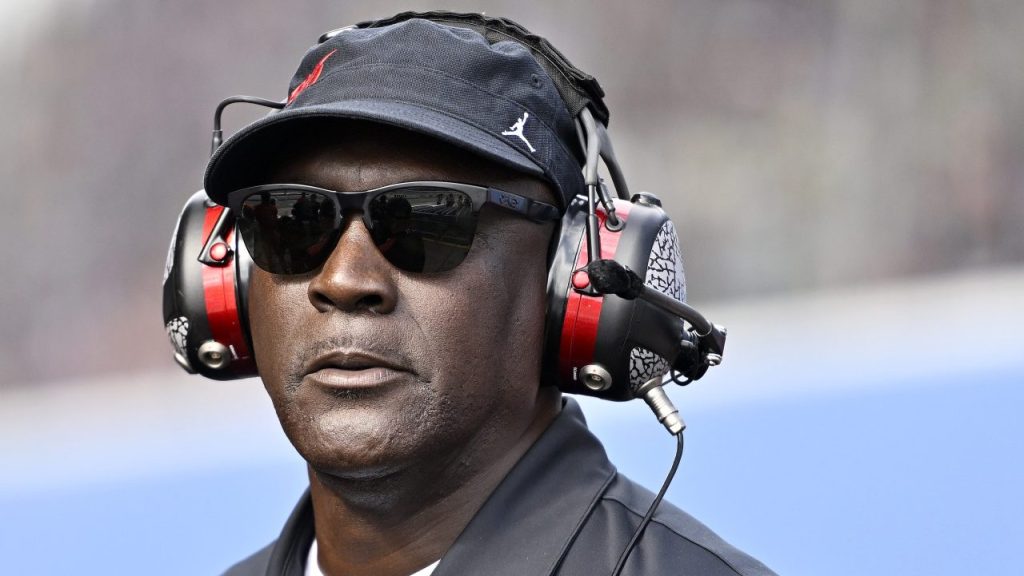
Michael Jordan’s win streak in the NASCAR antitrust litigation could be coming to an end.
On Friday, a three-judge panel on the U.S. Court of Appeals for the Fourth Circuit held an oral argument in the Lewis F. Powell, Jr. U.S. Courthouse in Richmond, Va., on whether a trial judge correctly granted preliminary injunctions for 23XI Racing, which Jordan owns with Denny Hamlin, and Front Row Motorsports in their case against NASCAR.
Judges Paul V. Niemeyer, G. Steven Agee and Stephanie Thacker heard the dueling arguments, and their remarks indicated they found the injunctive relief problematic and signaled they might vacate it.
Jeffrey Kessler of Winston & Strawn delivered the oral argument for Jordan’s group. Kessler is arguably the most prominent sports litigator in the country, having represented college athletes, Tom Brady and U.S. women’s national team players in antitrust, labor and contractual disputes. NASCAR retained Christopher S. Yates of Latham & Watkins to present its case. Yates, a highly accomplished sports litigator in his own right, recently led U.S. Soccer to an antitrust trial victory over the North American Soccer League.
To be clear, the hearing was not on the larger issues presented by the case, but on the narrow question of whether U.S. District Judge Kenneth D. Bell errantly granted injunctive relief last December. The relief prohibits NASCAR from denying 23XI and Front Row the same terms offered to charter teams but with a twist that seemed to bother the trio of judges: 23XI and Front Row, unlike NASCAR charter teams, weren’t required to sign a mutual release of claims.
During the hearing, Thacker opined that “this is the first time . . . in all the history of contract law” that an injunction mandates what—NASCAR insists—is essentially a new contract. 23XI Racing and Front Row contractually receive the benefits of a charter without having to sign a release. Kessler countered that “there are very few adjudicated monopolization cases” and thus there is a shortage of decisions to cite.
Niemeyer seemed especially skeptical of the plaintiffs’ viewpoint. He said he understands Kessler’s contention that there are legitimate antitrust claims against NASCAR. The case centers on 23XI Racing and Front Row’s assertion that charters, which guarantee teams a starting position in NASCAR-sanctioned races while restricting their capacity to compete in other circuits, run afoul of antitrust law. NASCAR, as depicted by the plaintiffs, has too much control over the “buying” of drivers and teams’ services in premier stock racing series.
But Niemeyer reasoned that the logic for the injunction breaks down when viewing the charter’s mutual releases as an exchange for teams getting what they really want: the chance to participate in NASCAR races as charter teams.
The judge surmised that once teams sign the release, they aren’t injured in a legal sense since they’re able to race as chartered teams. In other words, if a team doesn’t want to race as a charter team because the team sees the charter as illegal, it simply shouldn’t sign and should then sue. Under this logic, 23XI Racing and Front Row want the benefits of the charter and the chance to sue.
Kessler disagreed, saying the relevant harm is that teams “are selling our services to NASCAR,” an organization Kessler says sets the price paid to teams and has “set below competitive market prices.” With the NCAA understandably on Kessler’s mind as he and other counsel wait for U.S. District Judge Claudia Wilken to approve the House settlement, Kessler compared NASCAR to the NCAA. While NASCAR allegedly sets prices for teams too low, Kessler said the NCAA has set prices at $0 for the services and NIL provided by college athletes. The injury in both instances, Kessler explained, “is you are getting too little.”
The judge suggested that Kessler wasn’t addressing the specific point at issue. Kessler was told it’s one thing to not sign the charter, which contains releases, and sue. But it’s another to sign the charter and get to sue because a trial judge has modified the charter for 23XI Racing and Front Row—but no other teams—by removing the releases.
Agee’s comments focused on the fact that the hearing is only about the injunctive relief, and he noted that Bell (the trial judge) made no findings of facts on other topics. Kessler was told he might ultimately prove the case at trial, which is scheduled for Dec. 1, but the three-judge panel is only weighing the lawfulness of Bell mandating NASCAR sign contracts with 23XI Racing and Front Row with modified terms.
Perhaps sensing the panel may be leaning in NASCAR’s direction, Kessler warned the three judges that vacating the injunctive relief “will cause irreparable harm.” He repeatedly said this part of the year “is the middle” of the NASCAR season and the trial isn’t until December. “We might lose our drivers in the interim,” Kessler said. He also said there would be injury to third parties, including Stewart-Haas Racing which sold charters via the injunction. Stewart-Haas “will have nothing . . . no drivers . . . in the middle of the [NASCAR] season” if Bell’s ruling is set aside.
Yates disagreed with Kessler. He stressed that Bell’s written order indicated he had “no opinion” on the merits of the case outside the releases. As Yates told it, Kessler is “challenging” an ordinary and competitive term (releases) in contracts found in American pro sports. The gist of a release is that if an athlete or, in the NASCAR context, team is able to compete in a professional sports competition and receive all the financial and reputational benefits that such eligibility carries, the athlete/team must accept the terms of the eligibility contract. One term is that they waive the right to later sue the league.
“If you want to race in NASCAR as a charter team, you have to agree to the release,” and if a team doesn’t want to agree to the release, it can compete as an open (non-chartered) team, Yates said.
Yates also argued that NASCAR and charter teams are hurt by the injunction. He maintained that NASCAR is “forced” into a contractual relationship with a counterpart with whom it doesn’t want to be in contract under the judicially compelled terms. As for charter teams, Yates said they suffer because they “lose” opportunities for compensation. The money pie for charter teams is divided into smaller pieces with 23XI and Front Row included. Yates said 23XI Racing and Front Row’s case boils down to “they are trying to have their cake and eat it too.”
The judges urged the two sides to take mediation seriously, and both Kessler and Yates pledged to do so. Yates, though, said, “we’re not going to rewrite the charter contract” to accommodate 23XI Racing and Front Row.
There is no timetable on when the Fourth Circuit will decide, but it will likely be within weeks. The fact that the judges seemed skeptical of the plaintiffs’ position doesn’t guarantee they’ll rule for NASCAR. Judges often use oral argument hearings to test their understanding of cases and accompanying arguments. Sometimes judges rule differently than how they sounded in a hearing. Still, it was a good day for NASCAR in court.
-
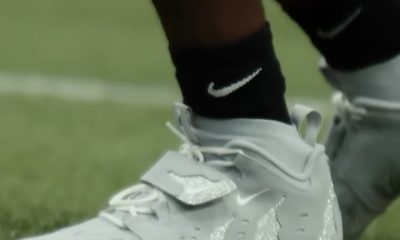
 Fashion2 weeks ago
Fashion2 weeks agoThis is poetry in motion.
-
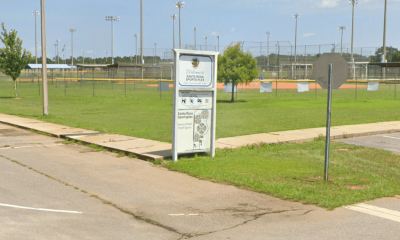
 Rec Sports2 weeks ago
Rec Sports2 weeks agoDeputies investigating incident that caused panic at Pace youth sports complex
-

 High School Sports2 weeks ago
High School Sports2 weeks agoAppling County football to forfeit all 10 wins from 2024
-
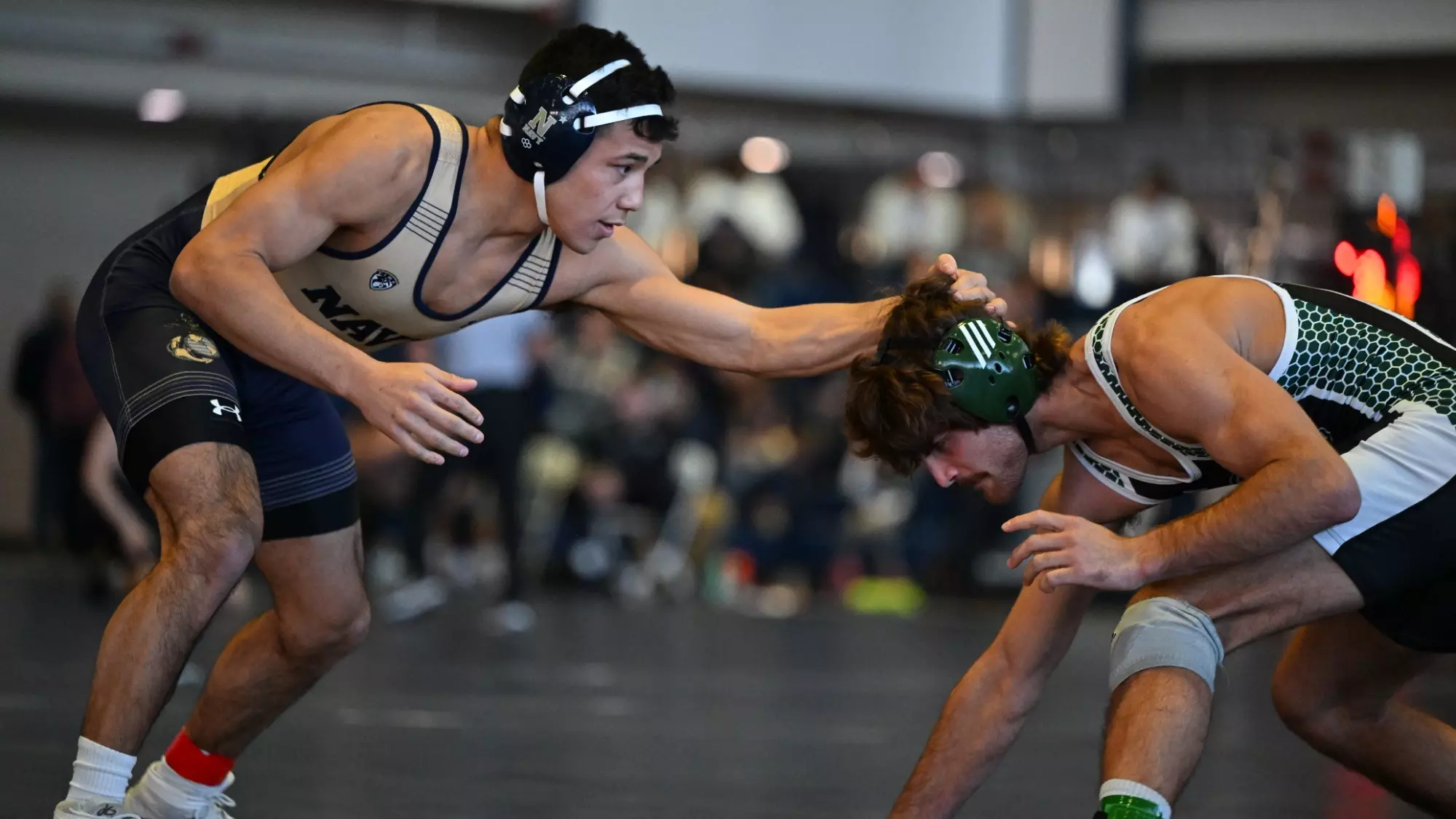
 College Sports2 weeks ago
College Sports2 weeks agoLehigh wrestlers prepare for wrestling U.S. Open
-
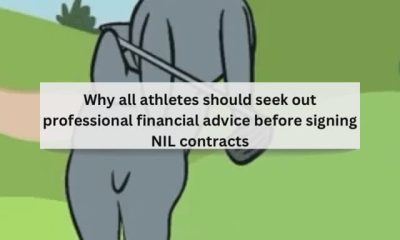
 NIL2 weeks ago
NIL2 weeks agoSave Like a Pro: NIL money isn’t free cash—taxes take a bite! Set aside part of …
-

 Sports2 weeks ago
Sports2 weeks agoHow to watch Yahoo Sports' NFL Draft Live show
-

 Fashion3 weeks ago
Fashion3 weeks agoWatch Saudi Arabian GP free live stream
-

 College Sports1 week ago
College Sports1 week agoDuke basketball's Isaiah Evans on 2025 NBA Draft early entry list
-
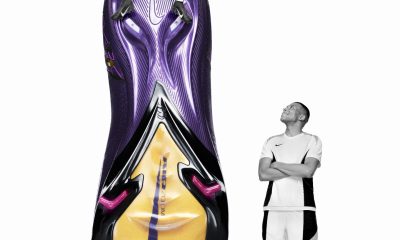
 Fashion2 weeks ago
Fashion2 weeks agohas always dreamed in Mercurial. Now his initials are on the boots. The new Kyl…
-

 Fashion6 days ago
Fashion6 days agoHow to watch Avalanche vs. Stars Game 7 FREE stream today













 (via gabefuerte9/TT)
(via gabefuerte9/TT)




